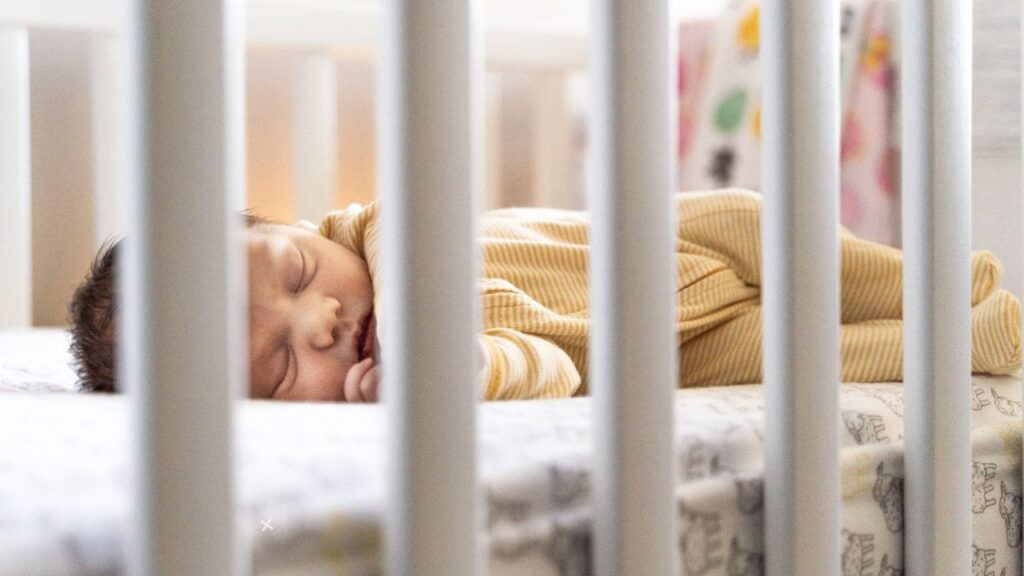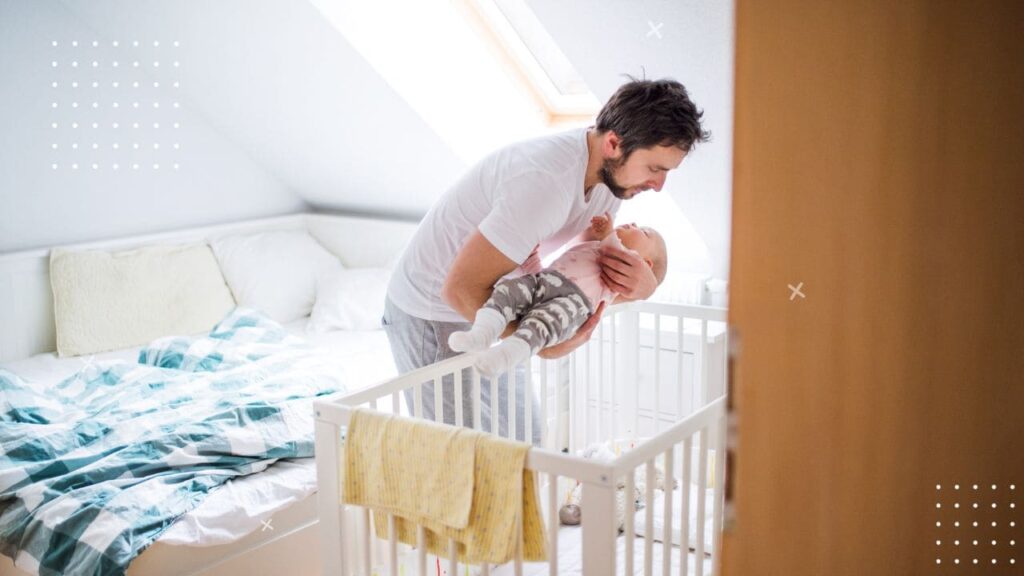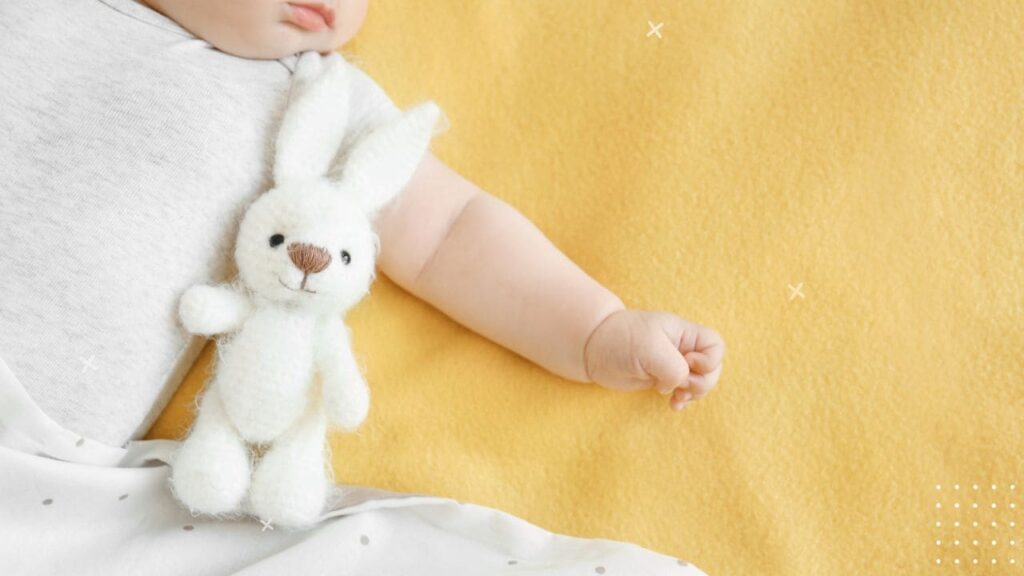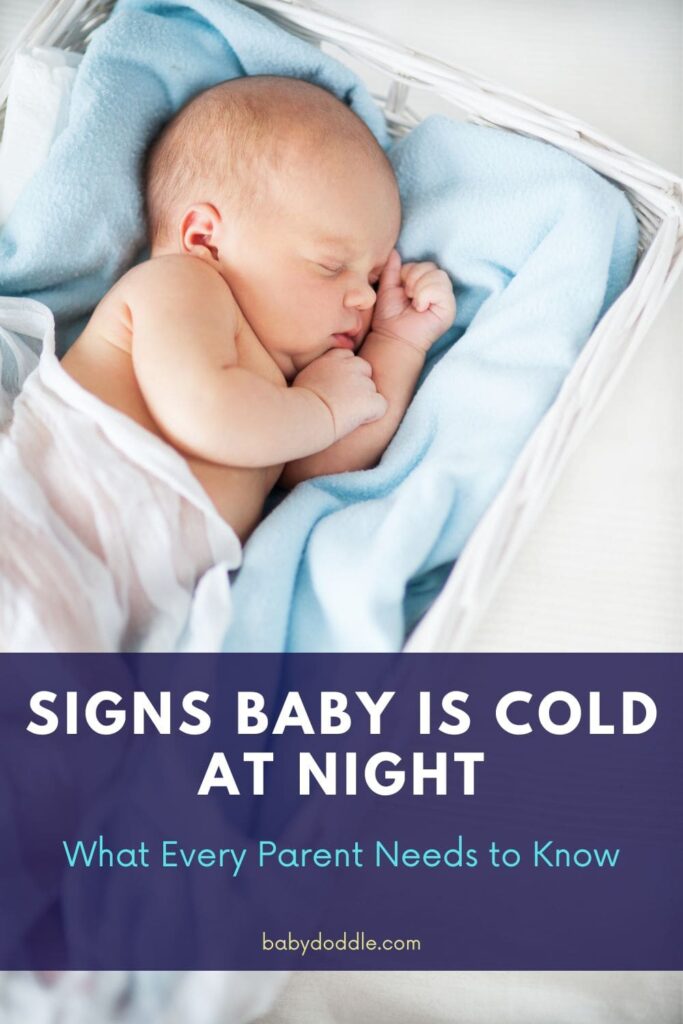As a new parent during those cold winter months, I remember how worried I’d get about whether our little guy was warm enough overnight. Babies can’t regulate their body temperatures like we can, so it’s vital to monitor signs baby is cold at night to ensure safe, cozy sleep.
After plenty of long, anxious nights learning the ropes of keeping baby warm in winter and how to provide a properly heated sleep environment, I’m sharing everything we learned about baby sleep temperature. Consider this your ultimate guide on recognizing if baby is getting too cold and helpful winter baby care tips!
Why Temperature Consistency Matters for Baby Health
Maintaining an ideal room temperature for newborns is about way more than just a good night’s sleep (as if that wasn’t crucial enough!). Studies show ambient room and body heat significantly impact babies’ sleep quality, but even more importantly, it affects SIDS (Sudden Infant Death Syndrome) risk.
Newborn infants can’t regulate their body heat independently like adults. They fully rely on external warmth sources for body temperature regulation. That’s why the official medical guidelines say to maintain bedrooms between 68-72°F (20-22°C) for safe infant sleep. This cozy range reduces the rate of SIDS deaths substantially compared to rooms cooler than 65°F.
So whether you have a newborn who needs to stay toasty in the winter months or battle overheating come summer, focusing on an ideal sleep environment temperature is vital to health and safety.

6 Clear Signs Your Baby is Too Cold at Night
How do you know exactly when your little snowman needs some extra heat? Here are the most common signs of cold discomfort in babies overnight:
1. Cool to the Touch
If parts of your baby’s body feel cool or cold, it likely signals they’re chilled. Just don’t be fooled by icy hands/feet which don’t necessarily indicate core temperature.
2. Frequent Waking
Frequently waking without obvious causes like hunger may mean your little icicle is shivering! Cold babies have trouble regulating sleep cycles.
3. Early Waking
Along with frequent wakings, early rising between 3-5 am can indicate chilliness is disrupting your baby’s sleep patterns.
4. Restlessness
If you notice agitation, unrest, and ineffective movements of hands/feet, your snowman may be trying in vain to warm up.
5. Changes in Skin Tone
Pale, bluish skin usually appears on hands/feet as circulation concentrates around vital organs but can indicate dangerous hypothermia.
6. Clenched Fists
Instinctively making tight little fists helps babies conserve body heat by decreasing surface area. If you spy two tiny boxing gloves, coldness might be the culprit!

Buying Guide for Baby Cold Weather Essentials
As you layer on coats, scarves and mittens preparing to brave winter yourself, making sure baby has adequate gear for warmth is equally important on outings. Here’s what to look for when buying key cold weather baby items:
Cozy footed bodysuits – Choose fleece or wool long sleeve footed bodysuits rather than separates which can ride up and expose skin. Innovative baby companies like Woolino or Merino Kids offer temperature regulating base layers perfect for fluctuating conditions.
Soft hooded coats – When choosing outerwear, focus first on comfort with soft textures before considering appearance. A happy baby will stay warmer than one bothered by scratchy embellishments. Brands like PatPat, Simple Joys, and Gerber balance function with cute designs.
Mittens, not gloves – Tiny uncoordinated hands struggle to keep traditional gloves on. Mitten cuffs with fold-over sleeves prevent any skin exposure when inevitable removal occurs! Many also have inner wrist bands to keep firmly in place.
Hat + Scarf/Head wrap – Don’t forget to cover older babies’ and toddlers’ necks which are prone to heat loss! A stretchy head wrap not only protects the neck but also anchors hats firmly in windy conditions when straps often fail. Products like the Zutano Fleece Cranberry Hat or Luvable Friends head wraps check all the boxes for adjustability and security.
Follow these insider tips when buying cold weather baby gear so your thermal explorer will stay perfectly bundled from home to the sledding hill and everywhere between! No more losing mittens or gaping coat sleeves allowing icy air to attack that tender skin. Just happy explorations all winter long!
Ideal Temperature for Safe Baby Sleep
To optimize cozy comfort and safety, experts recommend setting room thermostats between 68-72° F (20-22° C) during infant sleep. Getting into dangerous zones cooler than 65°F substantially raises the possibility of SIDS (Sudden Infant Death Syndrome) since infants rely fully on the external sleep environment for body heat regulation.
We found 72°F perfect, but every baby has unique preferences. Just carefully watch for any overheating with higher temps which also poses risks. Using an inexpensive room thermometer with min/max data is helpful for assessing overnight variability.
| Age | Recommended Temperature Range |
|---|---|
| Newborns 0-3 months | 68°F to 72°F (20°C – 22°C) |
| Infants 4-12 months | 65°F to 70°F (18°C – 21°C) |
| Toddlers 1-2 years | 62°F to 68°F (17°C – 20°C) |
Troubleshooting Chilly Room Situations
If your baby’s room tends to be cold despite your best efforts at insulation and climate control, don’t panic! Here are some troubleshooting tips:
Use a portable space heater temporarily – A compact, energy-efficient space heater with auto shut-off features can provide a burst of ambient warmth. But avoid running it long term or overnight when unattended.
Insulate windows – Window insulation film, blackout shades and lined curtains can all help trap heat. Ensure cords are inaccessible to babies to prevent entanglement hazards. Consider adding draft blockers at window sills as well.
Add area rugs – Plush area rugs help prevent heat dissipating into cold floors especially for rooms above unheated spaces like garages or basements.
Swap crib location – Place the crib against interior or well-insulated walls for more ambient warmth. But don’t position near heaters, appliances, or drafts.
With a few modifications tailored to your home’s trouble spots, you can transform even old drafty spaces into a properly heated haven for your little hibernator. Don’t hesitate to get creative keeping the cold at bay!

Tips to Warm Your Baby While Preventing Overheating
Once you confirm your little icicle would prefer more tropical temps, what’s the best approach to help them stay cozy without danger of overheating? Here are pro parent-approved strategies for maintaining ideal baby sleep temperature:
Use Sleep Sacks
These wearable blanket-replacements allow monitoring baby’s back for warmth and are designed specifically for safe infant sleep environments. Choose weight-appropriate TOG ratings for adjustability.
Layer Footed Pajamas
For extra insulation on cold nights, we would layer cozy footed pajamas under sleep sacks, being careful about proper neck/waist fit
Try Breathable Head Coverings
Well-ventilated hats or beanies can help reduce heat loss from baby’s disproportionately large head just remove them once asleep to avoid overheating.
Add Mattress Pads
Extra crib mattress padding adds a layer of insulation between baby and the cool surface while still maintaining a firm flat surface as recommended by safety guidelines.
Slightly Raise Room Temperature
If chilly symptoms persist, raising the thermostat 1-2 degrees F can provide relief but carefully watch for overbundling/sweating.
Use Warm Water Bottles
For the ultimate cold fighter, some parents recommend placing sock-covered hot water bottles outside the sleep sack near foot openings to provide extra ambient warmth. Just check temperature to prevent burns!
The key is observing baby’s signals and making incremental temperature adjustments to stay within the recommended safe sleep range. It may take some trial and error to find the perfect zone for your little one!
| Season/Temperature | TOG Rating |
|---|---|
| Spring/Fall 60-68F | 1.0-2.5 TOG |
| a Winter 68-72F | 2.5-3.5 TOG |

What If My Baby Gets Too Warm?
While it’s tempting to bundle up a shivery baby, overheating and sweatiness poses even greater health consequences.
Experts warn overdressing or letting rooms get overly hot significantly increases SIDS risk. That’s why it’s critical checking for signs of excess warmth like sweat, rapid breathing, extreme flushed skin, and feeling hot to touch. Infants heat up fast!
Aim to dress baby in just one layer warmer than you would wear, using breathable fabrics. And don’t use loose bedding which could shift over their face and impede breathing. A fitted sheet plus wearable blanket substitute is safest.
During dry winter months, use a humidifier and make sure bedroom humidity stays around the recommended 30-50% moisture range to prevent excess evaporation from baby’s sensitive skin.
The key is incrementally adjusting layers and environmental temperature while carefully watching baby’s signals until their sleep shows signs of quality uninterrupted rest indicating all is well!
After plenty of long nights and trial and error, these signs and tips helped us nail down the perfect winter overnight temperature for our little guy’s cozy comfort. No more anxious temperature checks or questioning if we should turn up the heat just a touch more! We hope they provide the confidence boost you need to relax about your baby’s overnight warmth knowing how to optimize their safe sleep environment. Sweet dreams!
FAQ – Signs Baby Is Cold at Night
What temperature should the baby’s room be for sleeping?
The official medical recommendations are to maintain the room temperature between 68-72°F (20-22°C). This ambient air temperature has been shown to optimize safe infant sleep and reduce SIDS risk. Temperatures lower than 65°F can be dangerous for babies.
How many layers should I dress my baby in to sleep?
As a general rule of thumb, babies should be dressed with one more layer than you are comfortable sleeping in. The key is not to overbundle or overheat them. Start with breathable footed pajamas plus a wearable blanket sleep sack. Adjust in increments from there based on signs of discomfort.
My baby always has cold hands and feet. Does that mean they’re too cold?
Not necessarily. A baby’s hands and feet are naturally cooler since blood circulation prioritizes warming their core. As long as your baby’s chest and torso feel nicely warm and their skin tone looks healthy, cold hands/feet alone are not a concern. Just monitor for other signals of chilliness.
Can I use a blanket or quilt if my baby seems cold?
No loose bedding like blankets or quilts should be used due to the suffocation hazard if they shift up over the face. Instead use a wearable blanket replacement sleep sack matched to the room temperature. You can also try layering footed pajamas underneath.
Is it OK for our whole house to be 68°F or should just the baby’s room be warmer?
It’s perfectly safe for household ambient temperatures to be around 68°F. Babies don’t need special “hot boxes”. The key is dressing them appropriately for sleep in wearable blankets and footed pajamas to maintain coziness. Providing a consistent room temperature is what matters most.
What are the first signs my baby is getting too hot or overheated?
Early signs of overheating include flushed, red cheeks, sweaty hair around neck/forehead, damp skin that leaves moisture on your lips when kissed, feeling hot to touch, and rapid breathing or panting. If you observe these, remove a layer of bedding immediately.
Can I use a space heater to warm my baby’s room?
While compact space heaters can temporarily provide ambient warmth, never leave them running unattended or while sleeping. They are too unstable for unsupervised operations especially with little ones around. Use intermittent bursts combined with safety measures like anchoring, auto shut offs, etc.












